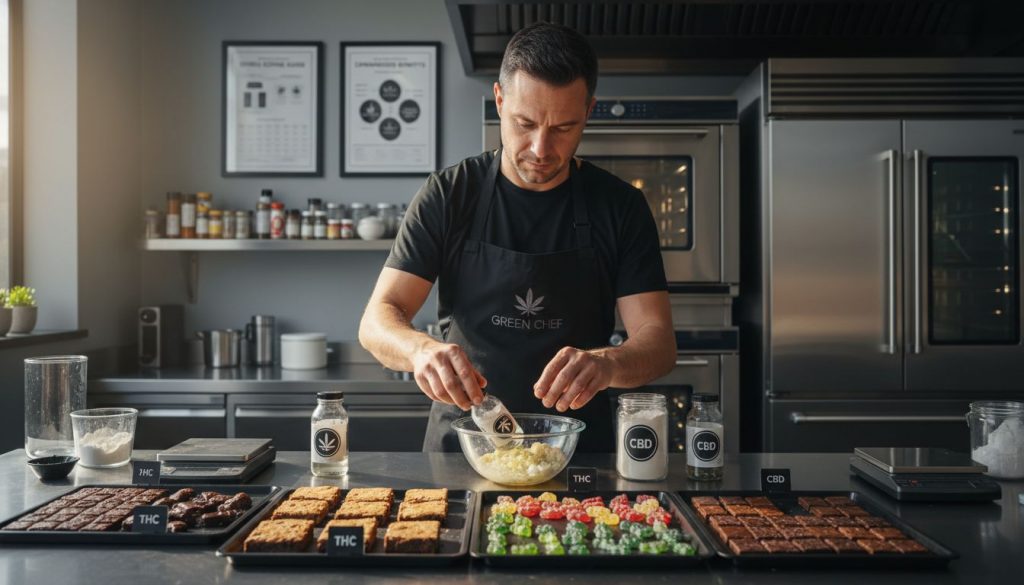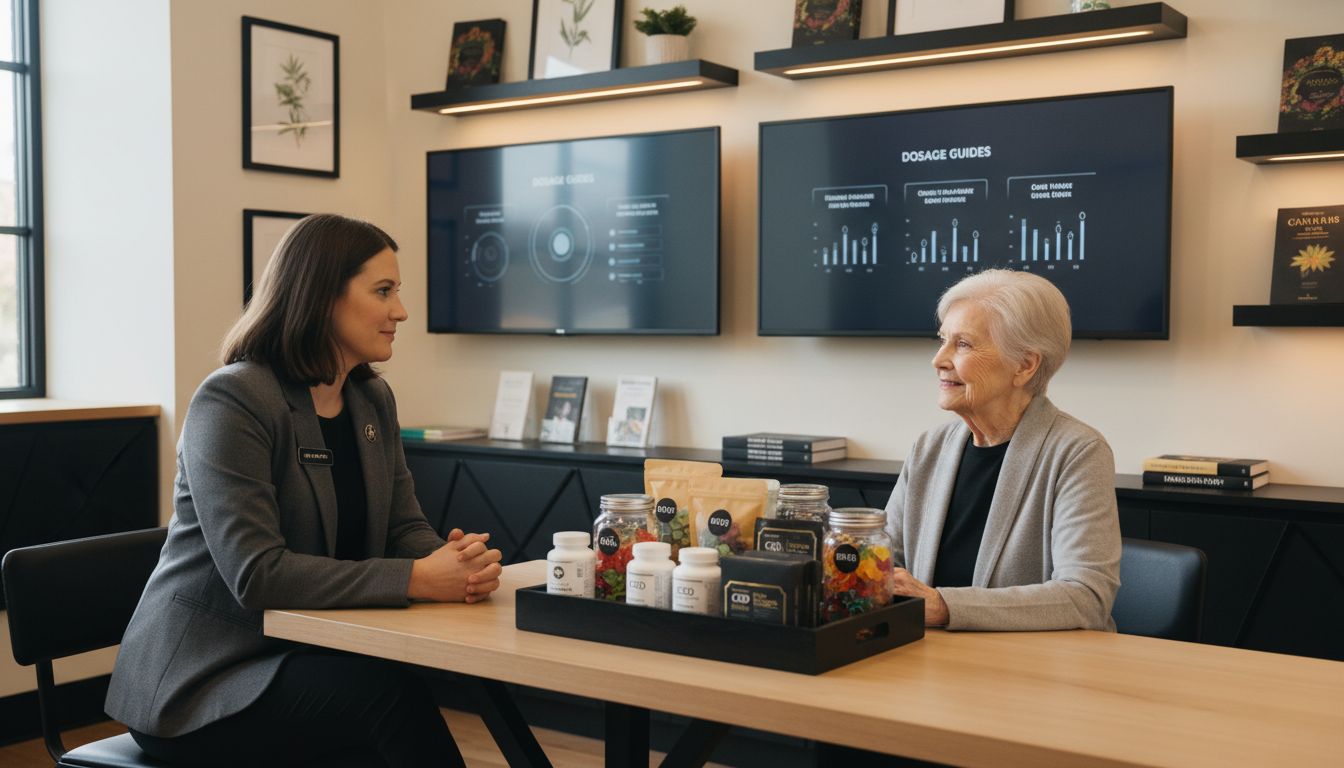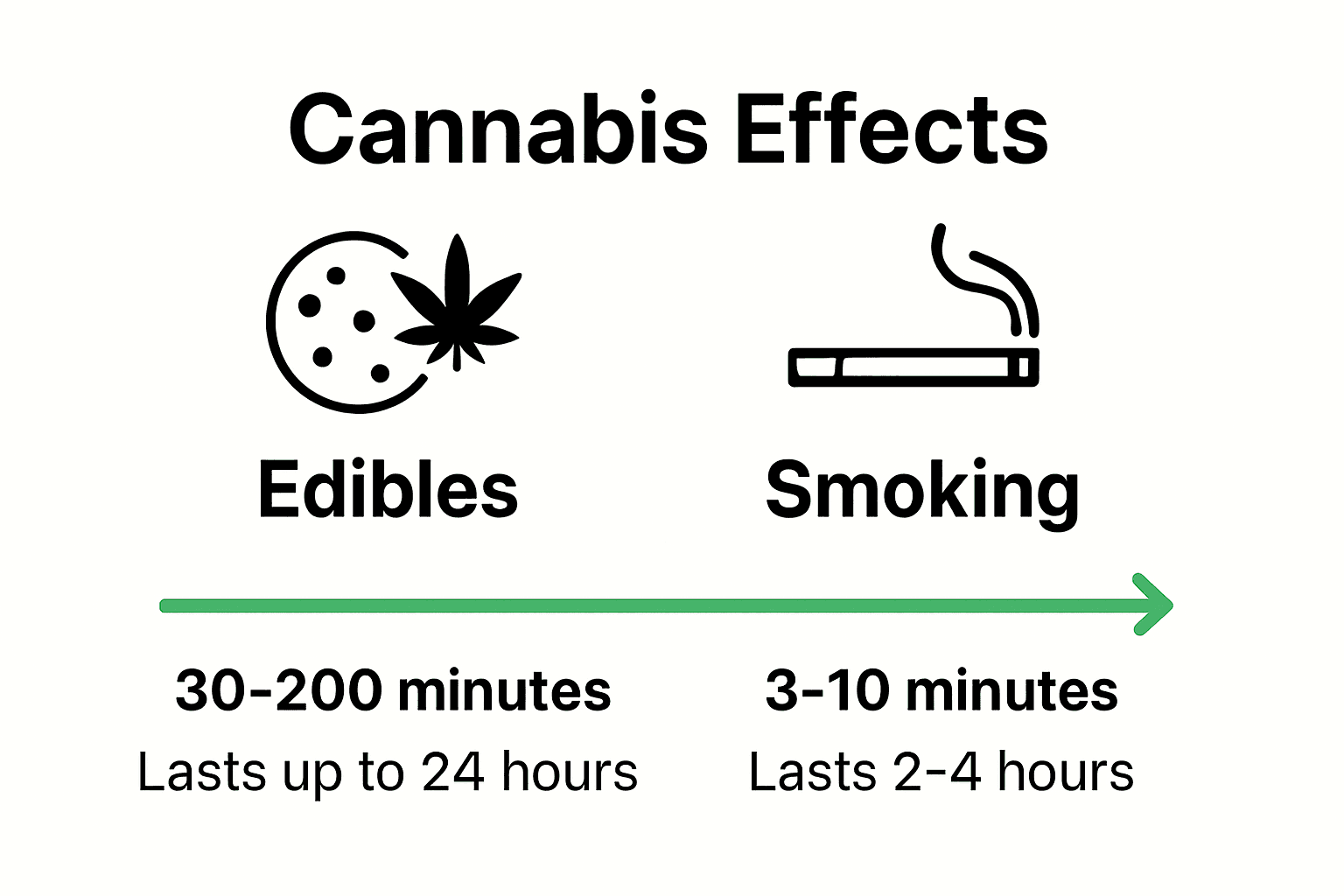
Complete Guide to Why Cannabis Edibles
More than 40 percent of people who try cannabis edibles report unexpected or stronger effects than they anticipated. Edibles have changed how many approach cannabis, offering flavors and formats that fit almost any lifestyle. Understanding how these products work and what to expect is crucial for both new users and experienced consumers who want to avoid unwanted surprises and make safer decisions.
Table of Contents
- What Are Cannabis Edibles And Effects
- Types Of Cannabis Edibles Available
- How Cannabis Edibles Work And Metabolism
- Medical Benefits And Wellness Applications
- Legal And Safety Requirements
- Risks And Mistakes To Avoid
Key Takeaways
| Point | Details |
|---|---|
| Delayed Onset of Effects | Cannabis edibles can take up to 2 hours for effects to manifest, with lasting impacts extending up to 24 hours. This necessitates careful dosage management to avoid overconsumption. |
| Variety of Edible Types | Edibles come in multiple forms, including gummies, baked goods, and beverages, each with unique onset times and effects. Consumers should choose based on their preferences and tolerance levels. |
| Metabolism and Potency | The metabolism of edibles differs from smoking, as THC is converted into a more powerful form, altering the experience significantly. Individual factors like liver enzymes and body weight can influence effects. |
| Risks of Overconsumption | Common mistakes include consuming edibles on an empty stomach and not waiting long enough between doses. Users should remain cautious and educated to avoid intense adverse reactions. |
What Are Cannabis Edibles And Effects
Cannabis edibles are food and beverage products infused with cannabinoids like THC and CBD that provide an alternative method of cannabis consumption. Unlike smoking or vaping, these products transform cannabis compounds into ingestible formats such as gummies, chocolates, baked goods, and beverages that can be consumed discreetly and precisely.
According to JAMA Internal Medicine, cannabis edibles can produce complex physiological effects that differ significantly from other consumption methods. The onset of effects is notably delayed, potentially taking up to 2 hours to manifest, with potential duration lasting up to 24 hours. This extended timeline increases the risk of overconsumption, making careful dosage management critical.
Edible effects can vary widely based on several key factors:
- Individual metabolism
- Body weight
- Tolerance levels
- Product potency
- Stomach contents
As research from Harvard Health indicates, potential side effects may include confusion, dizziness, and in some cases, panic attacks. Users should approach edibles with caution, start with low doses, and wait sufficient time before consuming additional amounts to understand their personal response.
Types Of Cannabis Edibles Available
Cannabis edibles represent a diverse and innovative category of cannabis consumption, offering users multiple options beyond traditional smoking methods. Ice Cream Cake and other infused products showcase the creativity and variety available in modern cannabis offerings.
According to JAMA Internal Medicine, cannabis edibles encompass a wide range of ingestible products designed to deliver cannabinoids through various formats. The most common types include:
- Gummies: Soft, chewy candies infused with precise cannabinoid doses
- Baked Goods: Cookies, brownies, and other pastries containing cannabis compounds
- Chocolates: Smooth, rich chocolate bars or individual pieces
- Beverages: Infused teas, sodas, and other drinkable cannabis products
- Capsules: Precise, measured doses in pill form
- Hard Candies: Discrete, long-lasting edible options
Wikipedia notes that each edible type offers unique characteristics, with variations in onset time, duration, and effect profile. The preparation method, individual metabolism, and specific cannabinoid concentrations significantly influence how these products interact with the human body. This diversity allows consumers to choose edibles that best match their preferences, desired effects, and personal tolerance levels.

How Cannabis Edibles Work And Metabolism
Understanding the complex metabolic process of cannabis edibles is crucial for safe and effective consumption. When ingested, these products undergo a unique transformation in the human body that differs dramatically from other cannabis consumption methods, with our Blog providing deeper insights into these intricate physiological interactions.
According to Harvard Health, the metabolism of cannabis edibles is a sophisticated process that begins in the liver. Unlike inhaled cannabis, edibles are processed through the digestive system, where THC is converted into 11-hydroxy-THC, a compound with significantly more potent psychoactive properties. This metabolic transformation explains the delayed and prolonged effects characteristic of edible consumption, with onset times ranging from 30 to 200 minutes.

Key metabolic factors influencing edible experiences include:
- Individual liver enzyme variations
- Body metabolism rate
- Existing stomach contents
- Personal tolerance levels
- Specific cannabinoid concentrations
JAMA Internal Medicine highlights a critical caution: the extended metabolic process can last up to 24 hours, increasing the risk of overconsumption. Users may inadvertently consume additional doses before experiencing the initial effects, potentially leading to uncomfortable or intense physiological responses. This underscores the importance of patience, precise dosing, and understanding personal metabolic responses when consuming cannabis edibles.
Medical Benefits And Wellness Applications
Cannabis edibles have emerged as a promising alternative for individuals seeking natural approaches to wellness and medical management. By offering precise dosing and controlled consumption, these products provide unique therapeutic potential that extends beyond traditional treatment methods.
Springer Link highlights that cannabinoids demonstrate small to modest benefits in medical applications, functioning effectively as complementary treatments for various health conditions. The potential wellness applications include:
- Pain Management: Reducing chronic and inflammatory pain
- Anxiety Reduction: Mitigating symptoms of anxiety disorders
- Sleep Improvement: Addressing insomnia and sleep disruptions
- Inflammation Control: Supporting immune system responses
- Neurological Support: Potentially alleviating symptoms of certain neurological conditions
However, the research emphasizes critical considerations for medical cannabis use. Regular consumption of high-THC products can potentially lead to addiction and adverse outcomes, underscoring the importance of professional medical guidance. Patients interested in cannabis-based treatments should consult healthcare professionals to develop personalized approaches that balance potential benefits with individual health requirements, ensuring safe and effective wellness strategies.
Legal And Safety Requirements
Cannabis edibles occupy a complex legal landscape that requires careful navigation by both consumers and producers. Understanding the intricate regulatory environment is crucial for safe and responsible consumption, with legal requirements varying significantly across different jurisdictions.
JAMA Network highlights the critical role of packaging regulations in ensuring consumer safety. Research indicates that plain packaging can significantly impact product perception, particularly among younger demographics. The study revealed that simplified packaging increases health warning recall while simultaneously decreasing product appeal, demonstrating the powerful role of strategic regulatory design.
Key legal and safety considerations include:
- Age verification requirements (21+ in most jurisdictions)
- Strict dosage labeling mandates
- Child-resistant packaging standards
- Maximum THC concentration limits
- Restrictions on marketing and advertising
Wikipedia emphasizes the ongoing challenges in standardizing edible cannabis products. Dosage determination remains complex, with potential overdose risks stemming from inconsistent THC concentrations. Many U.S. states have implemented rigorous product recall procedures to protect consumers, requiring precise labeling and quality control measures. Consumers must remain vigilant, carefully reviewing product information and consulting local regulations to ensure safe and legal consumption.
Risks And Mistakes To Avoid
Navigating cannabis edibles requires careful consideration and a nuanced understanding of potential risks. Inexperienced users often make critical mistakes that can lead to uncomfortable or potentially dangerous experiences, making education and awareness paramount.
According to JAMA Internal Medicine, one of the most significant risks is overconsumption due to the delayed onset of effects. Edibles can take up to 2 hours to become active and may continue impacting the body for up to 24 hours, creating a dangerous scenario where users might consume additional doses before experiencing the initial effects.
Common risks and mistakes to avoid include:
- Consuming edibles on an empty stomach
- Ignoring recommended serving sizes
- Mixing edibles with alcohol or other substances
- Failing to wait sufficient time between doses
- Storing edibles in locations accessible to children
- Underestimating the potency of different product types
Harvard Health warns that overconsumption can lead to intense physiological responses, including panic attacks and prolonged impairment. Product labeling inaccuracies further compound these risks, emphasizing the critical need for consumer vigilance, measured consumption, and a thorough understanding of individual tolerance levels.
Discover Your Perfect Cannabis Edibles Experience with Grade A Dropouts
Navigating the complexities of cannabis edibles can feel overwhelming with dosing delays and potency variations creating uncertainty. If you want to enjoy the benefits of edibles like pain relief or relaxation without guesswork, the challenge lies in finding trusted products that match your tolerance and wellness goals. Our article highlights how metabolism differences and careful consumption are key to a positive experience. That is why choosing from a reliable selection is crucial.

Explore a curated range of premium THC-infused edibles at Grade A Dropouts where quality meets transparency. From potent strains to edible formats designed for controlled dosing, our online dispensary supports safe, informed use with detailed descriptions and customer reviews. Start your journey by visiting our Uncategorized – Grade A Dropouts category to see offerings tailored to adults seeking natural healing. Don’t wait to take control of your cannabis experience. Visit Grade A Dropouts today and enjoy free delivery on orders over $200 to begin feeling the difference now.
Frequently Asked Questions
What are cannabis edibles and how do they work?
Cannabis edibles are food and beverage products infused with cannabinoids like THC and CBD. They work by undergoing digestion and metabolism in the liver, where THC is converted into a more potent compound, 11-hydroxy-THC, leading to delayed and prolonged effects compared to other consumption methods like smoking.
What types of cannabis edibles are available?
Cannabis edibles come in various forms, including gummies, baked goods like cookies and brownies, chocolates, beverages, capsules, and hard candies. Each type offers unique characteristics in terms of onset time, duration, and overall effects.
What should I consider when dosing cannabis edibles?
When dosing cannabis edibles, consider factors like your individual metabolism, body weight, tolerance levels, and the product’s potency. It’s important to start with a low dose, wait for effects to manifest (which can take up to 2 hours), and avoid additional doses until you understand your response.
What are the potential risks of consuming cannabis edibles?
The potential risks of consuming cannabis edibles include overconsumption due to the delayed onset of effects, which can lead to intense physiological responses like panic attacks. Other risks include ignoring recommended serving sizes and storing edibles where children can access them.
